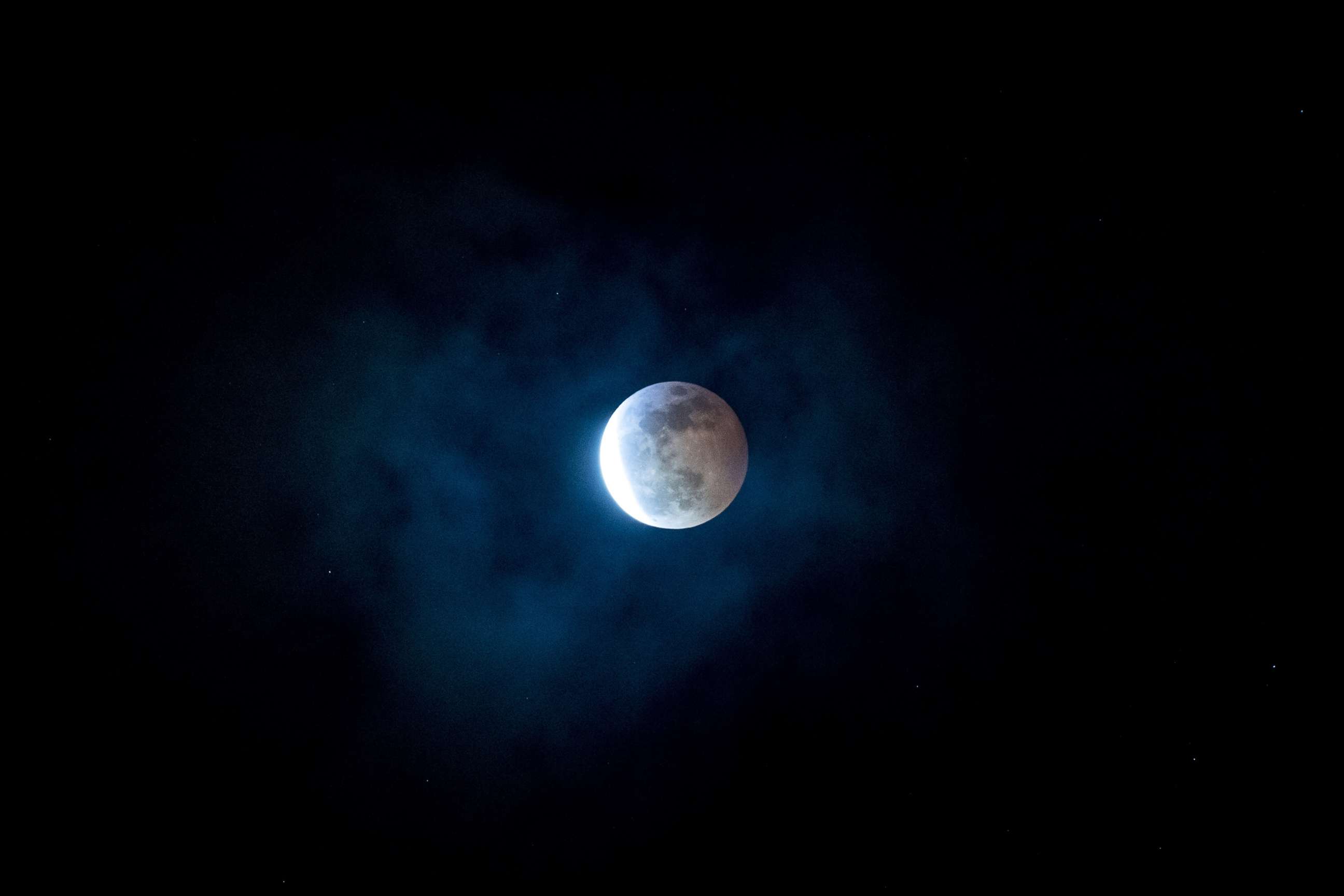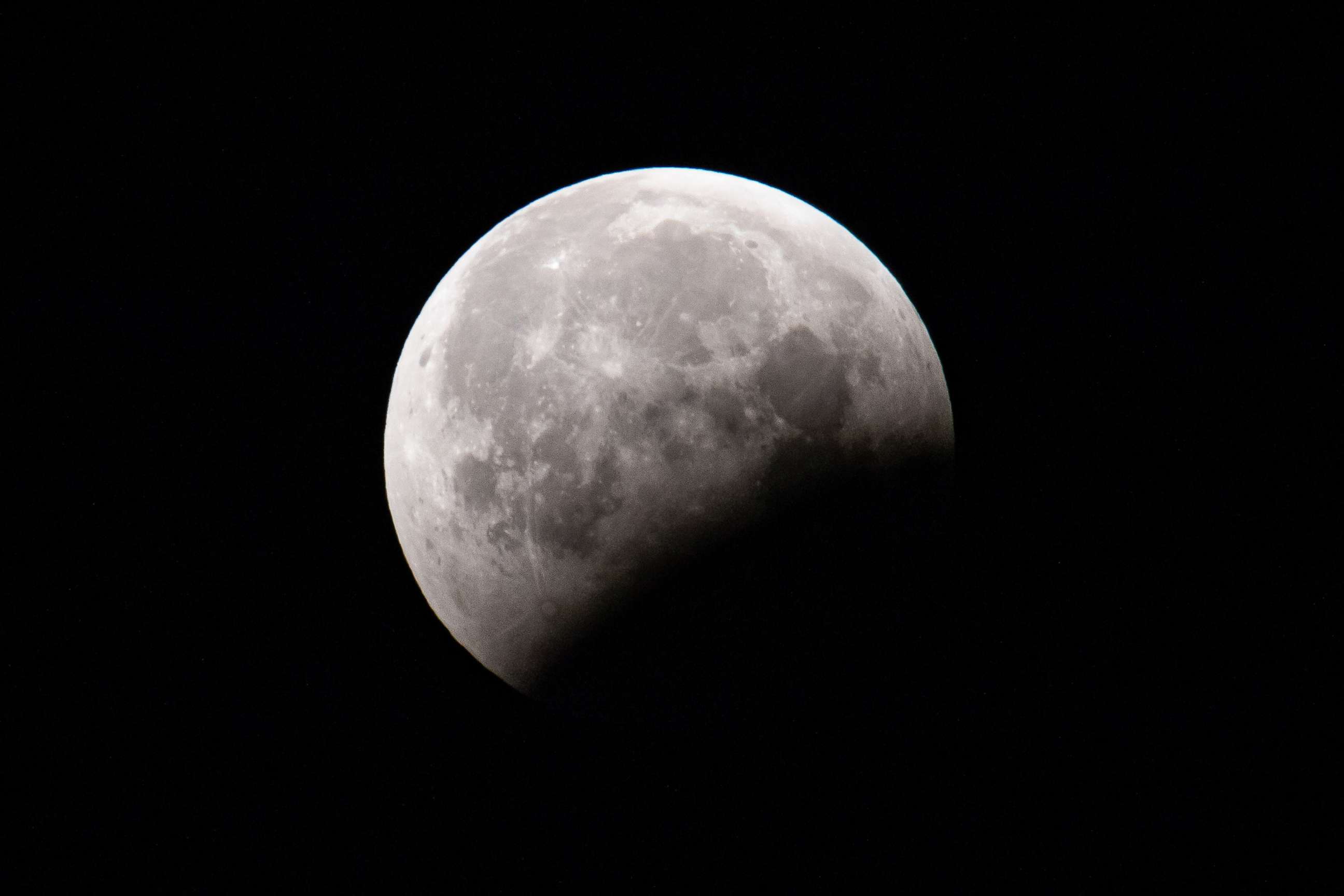First full moon of 2020, the 'wolf moon,' to coincide with lunar eclipse
The first full moon in January is nicknamed the "wolf moon."
Star-gazers will be treated to a double lunar event to start the new decade as the "wolf moon" coincides with a penumbral lunar eclipse.
The first full moon of January, which is nicknamed the "wolf moon," will appear opposite the sun on Friday at 2:21 p.m. and will appear full until Sunday morning, according to NASA.
Then, as the moon passes opposite the sun, it will pass through the partial shadow of the Earth on Friday night.

A penumbral lunar eclipse occurs when the moon is completely immersed in the penumbral cone of the Earth without touching the umbra, resulting in only part of the moon going dark before turning a dark red or orange color. It will be the first of four penumbral lunar eclipses in 2020, and one has not occurred since 2017, according to AccuWeather.
The gradual dimming of the moon will be barely noticeable and will occur during the daytime, while the moon is below the horizon for most of the Americas, with the exception of Alaska and far eastern portions of Canada, according to NASA.

Observers in Asia, Australia, Africa and Europe should be able to see the eclipse if weather permits, according to Accuweather.
The first moon in January was nicknamed the wolf moon because the howling of wolves were often heard during that time of year, according to The Old Farmer's Almanac.
Those who wish to see the event can check The Farmer's Almanac for local moonrise times.




